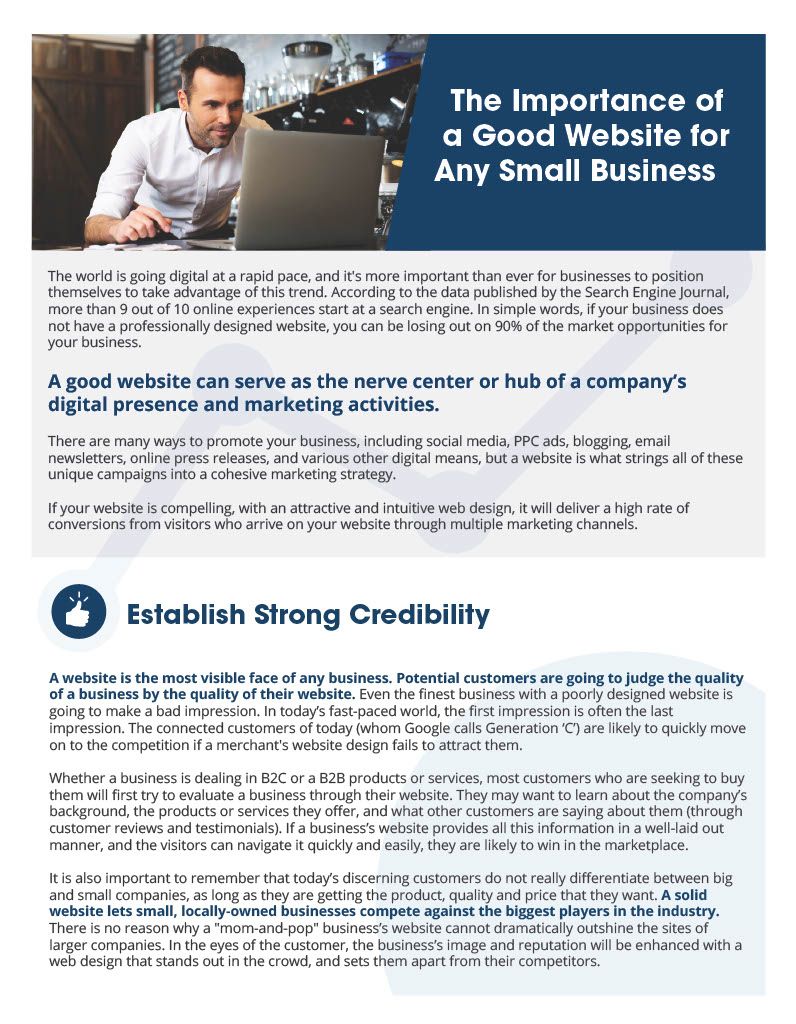
Stand Out from the Crowd!
Website design encompasses the process of creating and designing websites for the internet. Effective website design involves a combination of aesthetics, functionality, user experience, and technical considerations. Here are some key aspects and principles of website design: User-Centered Design: The primary focus of website design should be the user. Understanding the target audience's needs, preferences, and behaviors is crucial. Design with the user in mind to create a user-friendly and engaging experience.
Visual Elements:
Website design is a dynamic field, and trends and technologies evolve over time. Staying up-to-date with industry best practices and user preferences is essential for creating and maintaining a successful website. Additionally, collaborating with experienced webmasters can be valuable in achieving your website design goals.
Visual Elements:
- Layout: Clean and organized, with a clear hierarchy of content. It should guide users through the website naturally.
- Color Scheme: Choose a color scheme that aligns with your brand and enhances readability. Consider the psychological impact of colors.
- Typography: Use readable fonts and font sizes. Consistency in typography contributes to a cohesive design.
- Responsive Design: Ensure that your website is responsive, that it adapts and functions well on devices and screen sizes including desktops, tablets, and smartphones. Responsive design improves user experience and SEO rankings.
- Navigation: Create an intuitive navigation system that helps users find information easily. Use clear menus, breadcrumbs, and a search function, if applicable.
- Content: High-quality and relevant content is essential. Use concise and well-structured text, images, videos, and other media to convey your message effectively.
- Loading Speed: Optimize the website's performance by minimizing large images, using efficient coding practices, and leveraging content delivery networks (CDNs). Faster loading times improve user satisfaction and SEO.
- Mobile Optimization: Given the increasing use of mobile devices, prioritize mobile optimization. Consider mobile-first design principles and test your website thoroughly on mobile devices.
- Accessibility: Ensure that your website is accessible to people with disabilities. Follow web accessibility standards (WCAG) to make your site usable by a broad audience.
- Call to Action (CTA): Include clear and compelling CTAs to guide users toward desired actions, such as signing up for a newsletter, making a purchase, or contacting you.
- Security: Implement security measures, such as SSL certificates for data encryption, regular software updates, and protection against common web vulnerabilities.
- Testing and Optimization: Continuously test your website's design and functionality. Use tools like A/B testing to make data-driven improvements and refine the user experience.
- Scalability: Plan for future growth and expansion. Ensure that your website can handle increased traffic and content without significant performance issues.
- Legal Compliance: Familiarize yourself with legal requirements, such as GDPR for data protection or DMCA for copyright compliance, and ensure your website complies with relevant regulations.
- Feedback and Analytics: Collect user feedback and use web analytics tools (e.g., Google Analytics) to gain insights into user behavior and preferences. This data can inform design changes and content improvements.
- Content Management System (CMS): Choose an appropriate CMS like WordPress, Drupal, or Joomla to manage and update your website's content easily.
Website design is a dynamic field, and trends and technologies evolve over time. Staying up-to-date with industry best practices and user preferences is essential for creating and maintaining a successful website. Additionally, collaborating with experienced webmasters can be valuable in achieving your website design goals.







